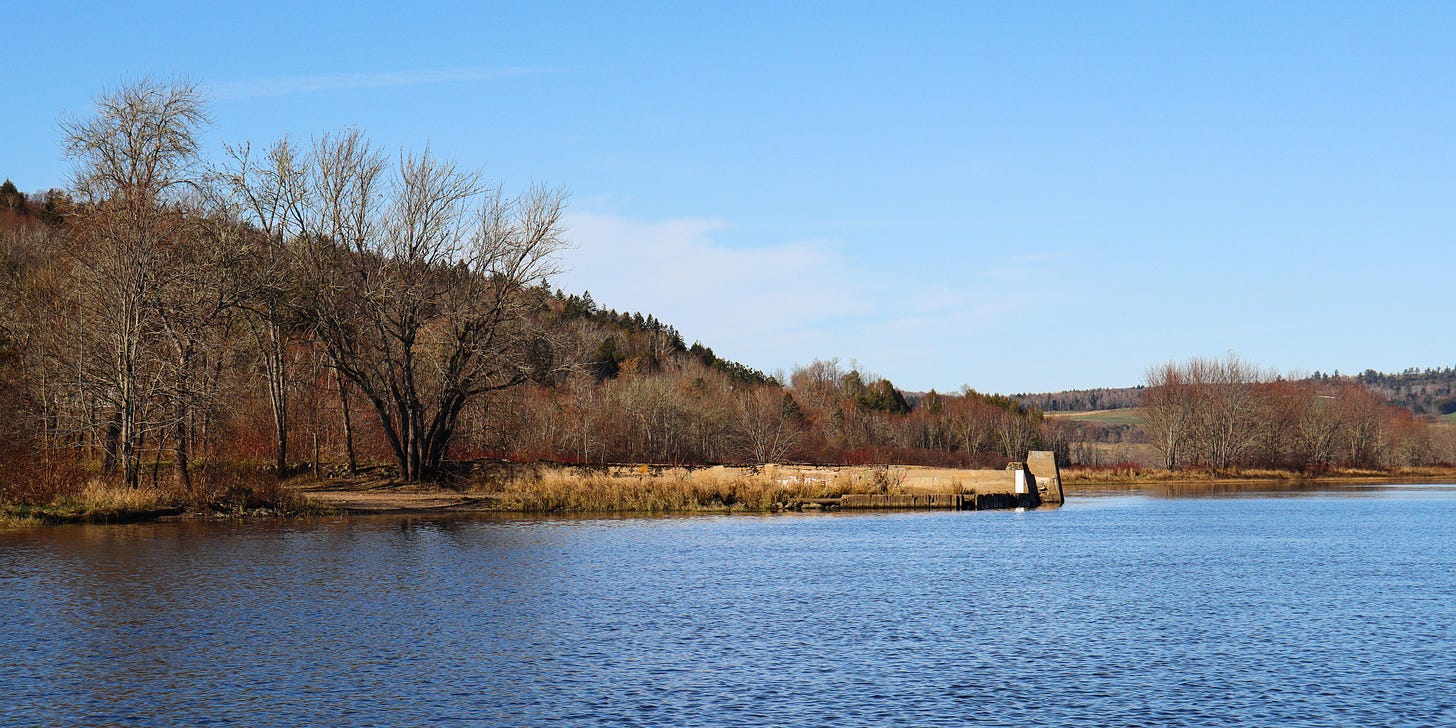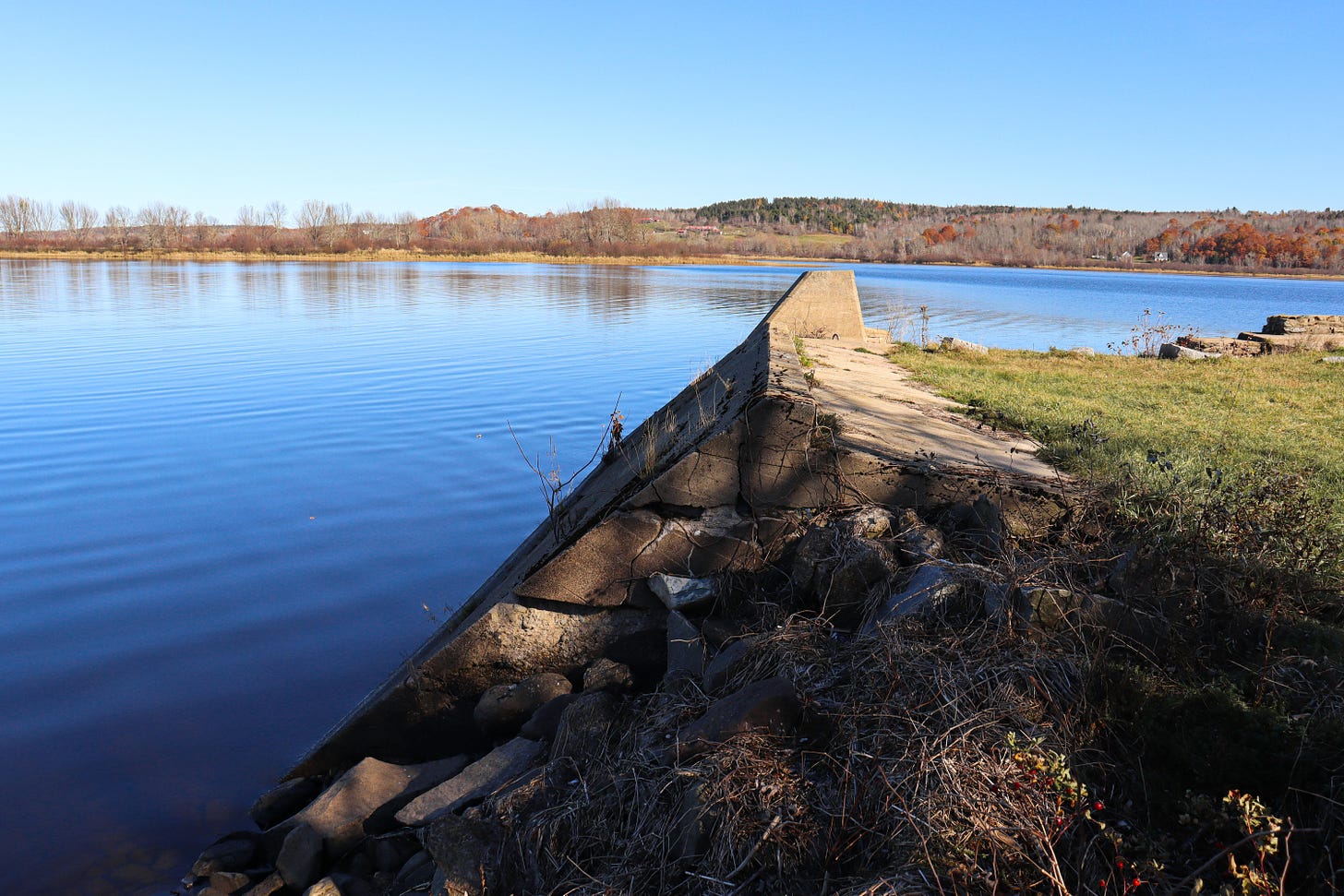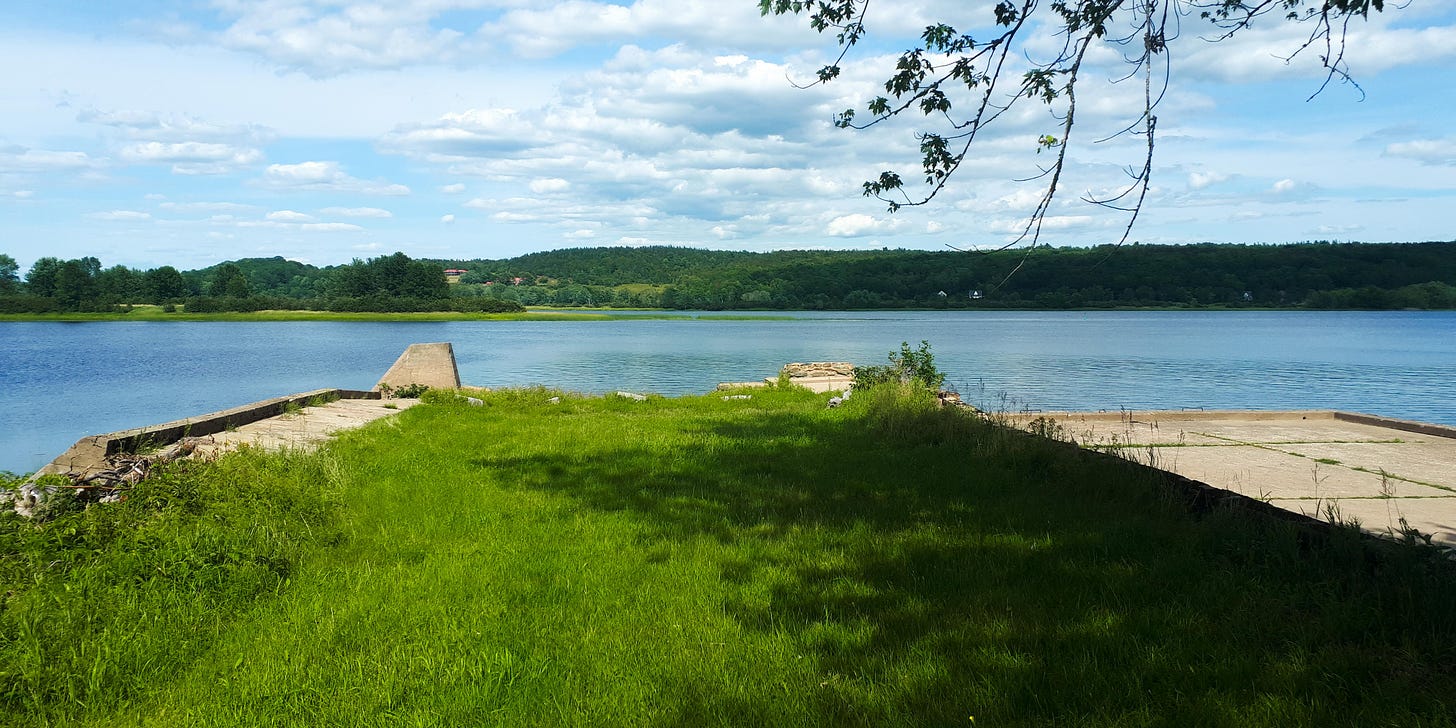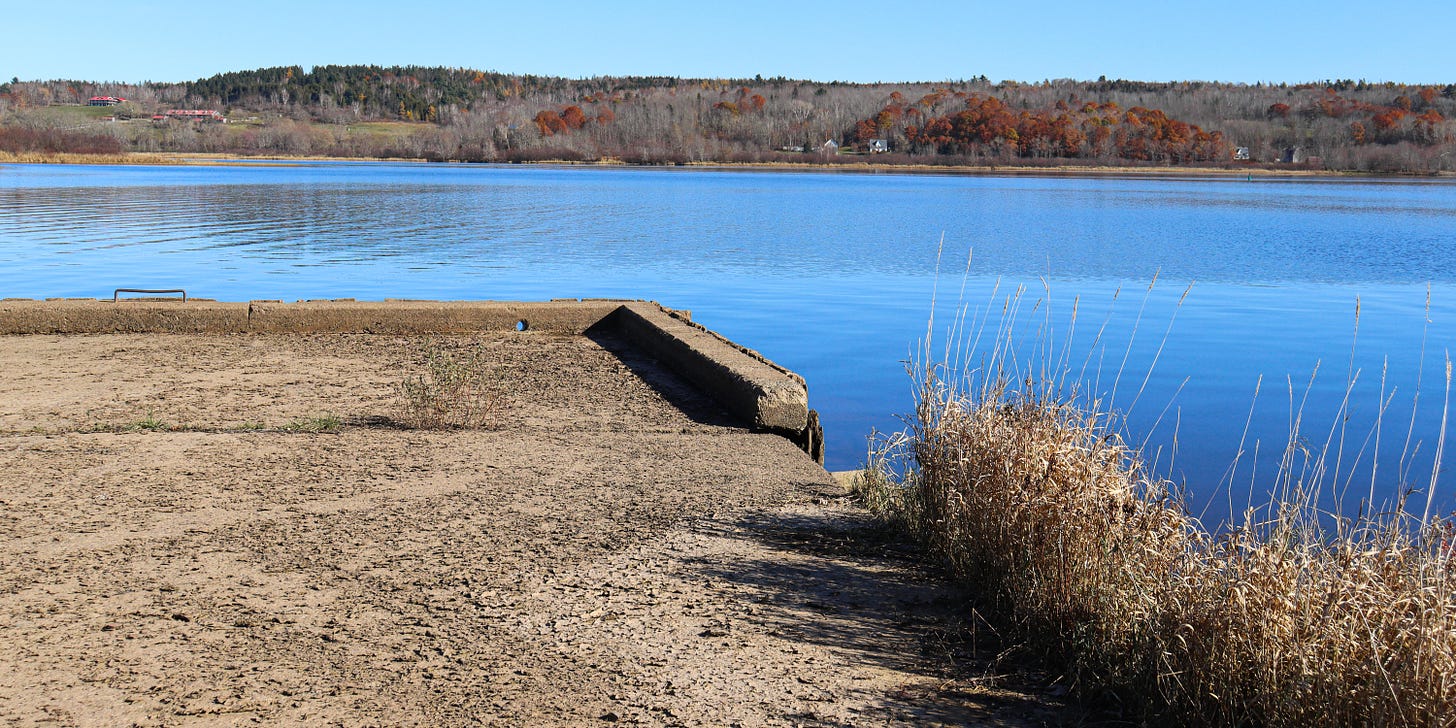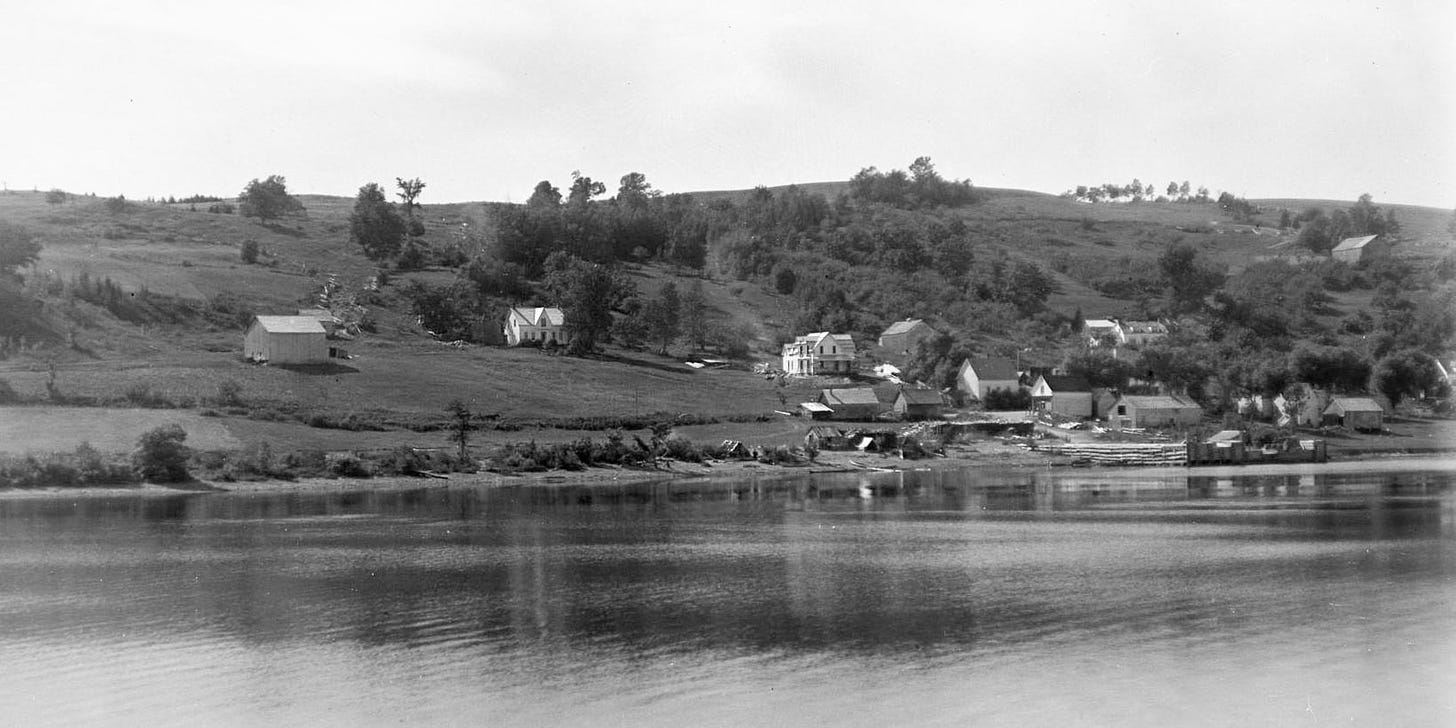Hampstead Wharf
Hampstead Wharf is a combined high and low water wharf located just below Long Island on the Lower Wolastoq in the Village of Arcadia.
This week’s wharf profile is the second in a series of collaborations with the St. John River Society. Initially acquired when the Department of Fisheries and Ocean’s Small Craft Harbour Program began divesting itself of derelict, low activity, and/or recreational wharves in the late 1990s, the St. John River Society took ownership of thirteen steamboat wharves to maintain public access to the river. The Society’s public wharves are undergoing major repairs this summer through a $970,000 grant from the Canada Community-Building Fund.1 Subscribe for free to receive future profiles directly in your inbox.
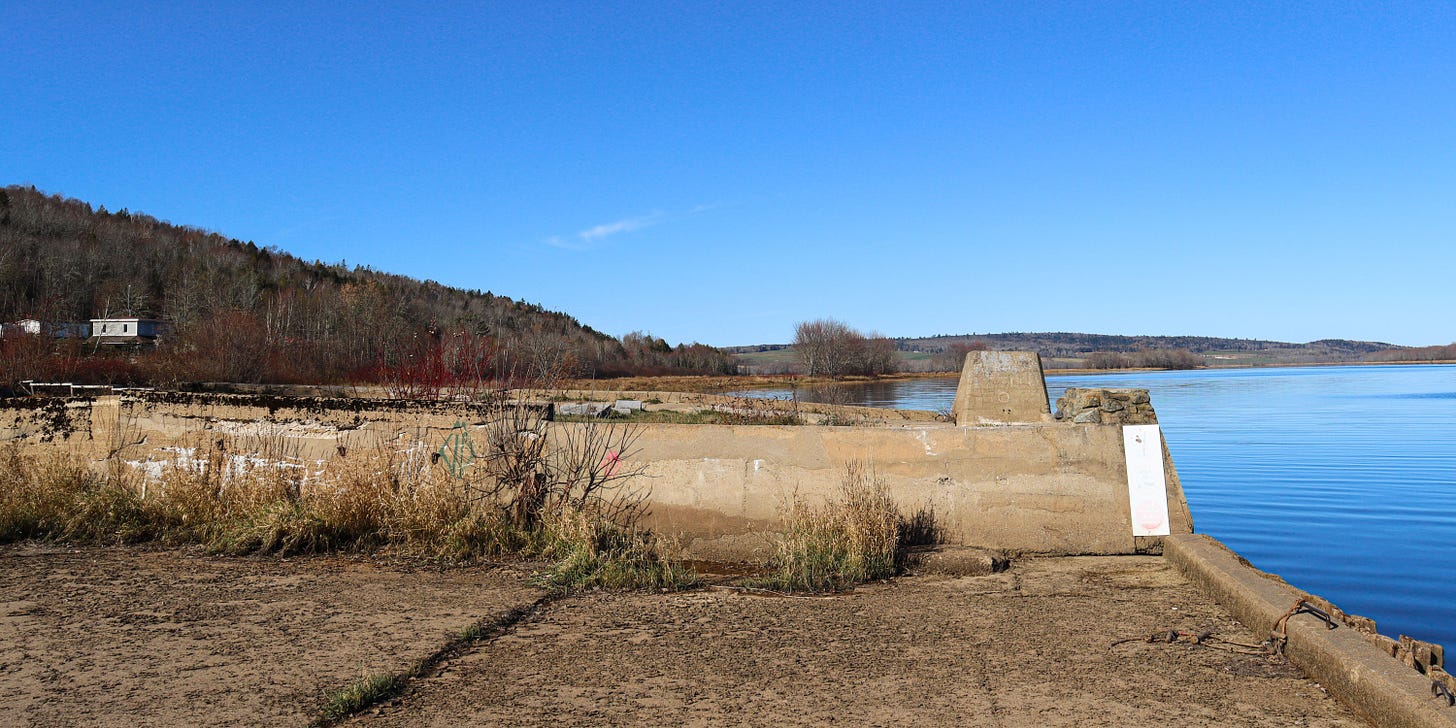
Hampstead is an example of a conjoined wharf that uses distinct styles for each deck. The high water section is similar to others profiled in previous weeks: 15 meters wide at the face and extending approximately 40 meters from shore, the wharf features two corner piers with concrete walls along the front and sides. The upriver side of the wharf is pitched to account for the flow of river ice, the slope serving to minimize annual damage to the wharf during the freshet.
The front of the wharf has been in disrepair since at least 1965, with the surface beginning to crumble in the 1970s.2 Although a cargo slip had likely once been present, the loose ballast now provides a gradual descent to the water. The rest of the high water deck is covered in grass, having originally been surfaced with gravel.3
The low water section, also about 15 meters wide, is a sheathed wharf. In contrast to other wharves profiled thus far, sheathed wharves use far less concrete and rely instead on the use of timber piles to maintain their structural integrity. As contractor Jarvis Doucey recently explained to the CBC’s Jeanne Armstrong, wood sheathing functions as a barrier between the water and the ballast that fills the wharf:
The sheathing … holds our loose ballast. … If you let this sheathing go the ballast gets run out of there and then all this weight [from the concrete deck cap] goes down on it. But this sheathing will lock it in for another ten or twenty years. … It’s drove in the ground a couple of feet and bolted to the top.4
Curiously, sheathed wharves rarely — if ever — feature piers. Although the sheathing’s primary function is to maintain the integrity of the wharf’s ballast, the timbers also doubled as fenders to reduce the risk of damage to steamers while docking at the wharf. Despite being more permanent than sheathing, concrete walls lacked this dual functionality, necessitating the addition of dedicated fender strips on piers. It’s possible that sheathed wharves were not equipped with piers because the timber siding made individual fender strips redundant.
The Hampstead Wharf was built sometime before 1876.5 Based on photographs found in the Provincial Archives, it appears that the original design of the wharf consisted of twin high water sections with a low water section between them. The wharf was overhauled in 1911, replacing the downriver section with a new low water wharf.6
The following year, another cribwork structure was constructed just below the low water section to support the new Hampstead Lighthouse. Replacing the original mast light installed in 1900, the Lighthouse stayed in this position from 1912 until 1999 when the Coast Guard determined that its foundation was unstable and relocated the structure to the deck of the high water wharf. The Hampstead Lighthouse remained on the high water deck for another two years before being moved to its current position closer to the road. Portions of the lighthouse’s cribwork base are still visible in the water today.7
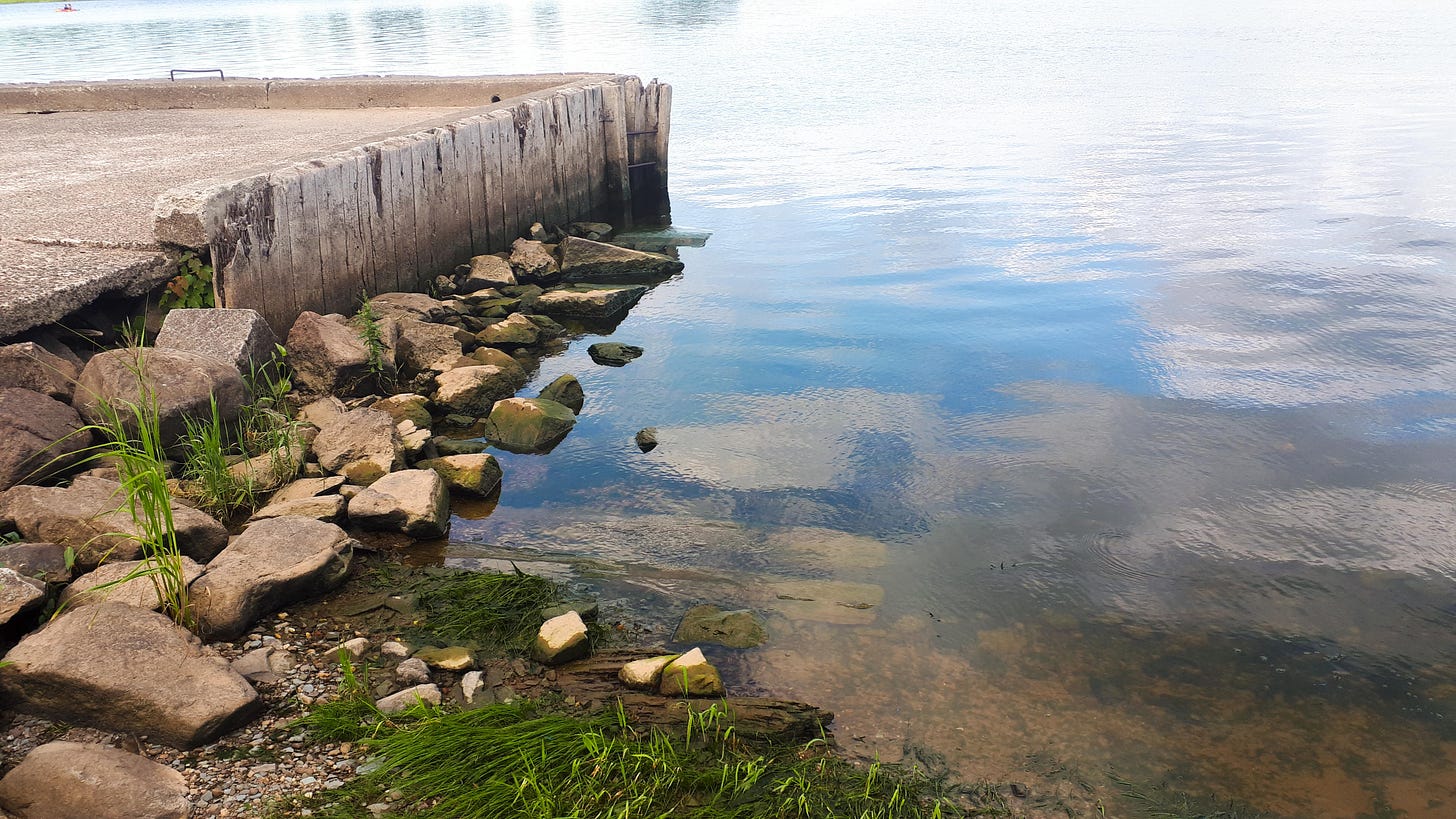
The Hampstead Wharf was acquired by the St. John River society in the early 2000s with various repairs performed over the years. Most recently in 2020, the Society replaced a number of timbers in the low water section’s sheathing through a grant from the Community Investment Fund.8
Hampstead is one of a number of wharves in Queens County that feel quite remote these days because of their distance from both Saint John and Fredericton. Due to the end of steamboat service in 1946 and the creation of Base Gagetown in 1958, this thin strip of farming communities along the western side Lower Wolastoq became quite isolated from the province’s urban centres in the latter half of the twentieth century. In the late 2000s, the wharf was rendered even more remote by the closure of the Hampstead-Wickham cable ferry service. Despite the extra effort required to visit compared with more urban wharves like Westfield or Oromocto, the Hampstead Wharf is still well worth the trip — be it by car or boat.
Jeanne Armstrong, “A century ago, river wharfs were a lifeline for residents. Now they’re getting a facelift,” CBC News, July 24, 2024, https://www.cbc.ca/news/canada/new-brunswick/saint-john-river-wharfs-facelift-1.7272506.
Canadian Hydrographic Service, Saint John River Pilot from Saint John Harbour to Fredericton with Grand Lake and Kennebecasis Bay (Ottawa: Canadian Hydrographic Service, 1965), 28; Canadian Hydrographic Service, Small Craft Guide Saint John River, 1st ed. (Ottawa: Department of the Environment, 1976), 48.
Report of the Minister of Public Works on the Works Under his Control for the Fiscal Year Ended March 31, 1929 — Chief Engineer’s Report in Annual Departmental Reports 1928-29 Volume 4 (Ottawa, Ontario: F. A. Ackland, Printer to the King’s Most Excellent Majesty, 1930), 43.
Jeanne Armstrong, “Built at the turn of the century, this wharf is getting a facelift,” CBC News, https://www.cbc.ca/player/play/video/9.6453432, 2:25-3:09.
Twenty-Second Annual Report of the Chief Commissioner of Public Works, New Brunswick 1876 in Journal of the House of Assembly of the Province of New Brunswick (Fredericton, New Brunswick: D.G. Smith, 1877), 6 (686).
Report of the Minister of Public Works on the Works Under his Control for the Fiscal Year Ended March 31, 1912 — Chief Engineer’s Report in Sessional Papers of the Second Session of the Twelth Parliament of the Dominion of Canada Volume 11 (Ottawa, Ontario: C.H. Parmelee, Printer to the King’s Most Excellent Majesty, 1912), 114.
Kraig Anderson, “Hampstead Wharf Lighthouse, New Brunswick Canada,” Lighthouse Friends, accessed July 31, 2024, https://www.lighthousefriends.com/light.asp?ID=1153.
The St. John River Society, “Upgrades to the Queenstown and Hampstead Wharves are complete! Thank you to…”, Facebook, July 16, 2020, https://www.facebook.com/StJohnRiverSociety/posts/pfbid0aT5rHkHDwLWaD8FDqrF8rfFJtaDY7BFpE6uqiPwunSUXQT1LsX4KJhKvKCwzehavl.





